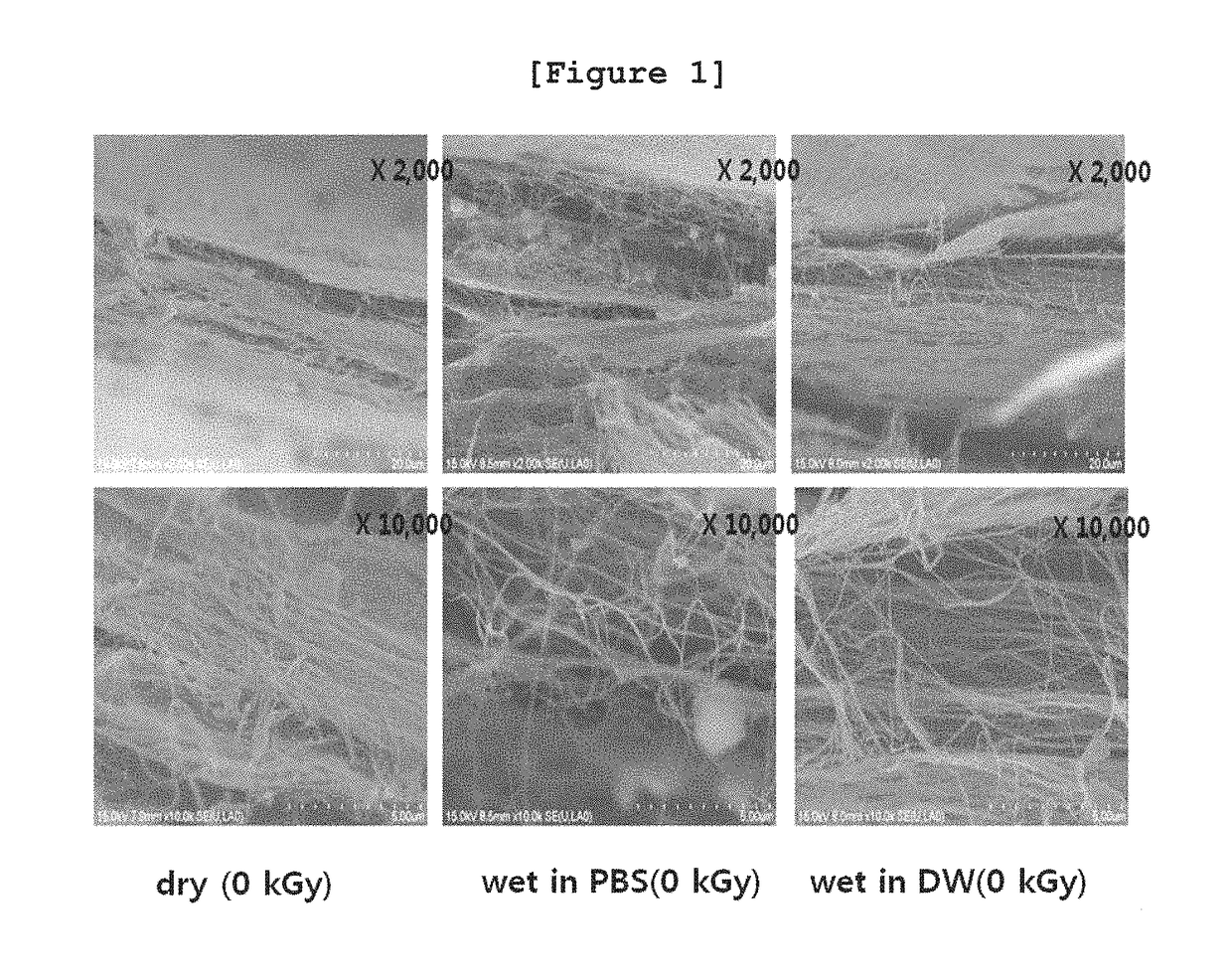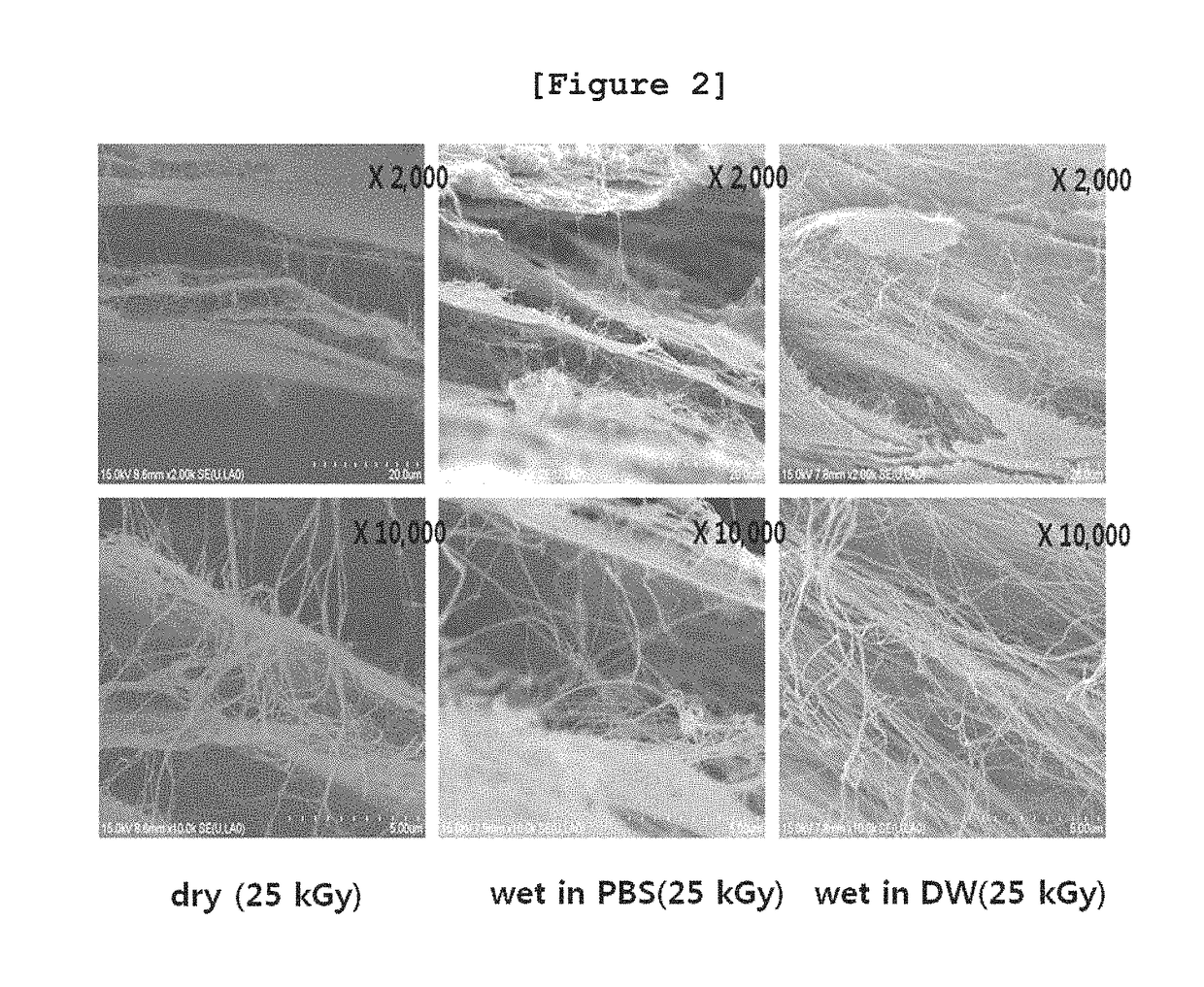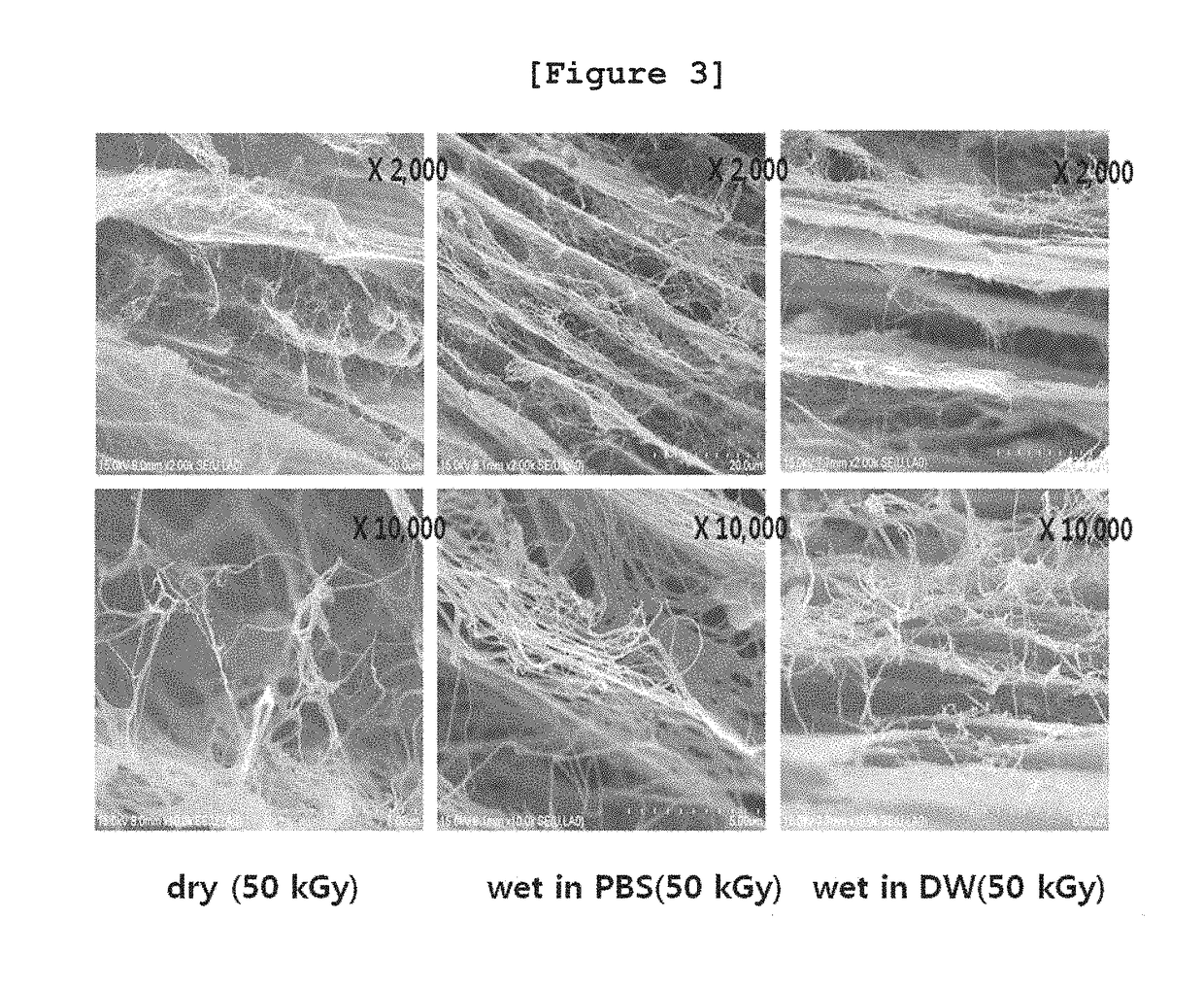Biodegradable control of bacterial cellulose by radiation technology and absorbable periodontal material using same
a radiation technology and cellulose technology, applied in the direction of bacteria material medical ingredients, sugar derivates, organic chemistry, etc., can solve the problems of reducing affecting the absorption capacity of cellulose, and unable to guarantee the successful bond formation of collagen membranes, etc., to achieve excellent absorption. the effect of sufficien
- Summary
- Abstract
- Description
- Claims
- Application Information
AI Technical Summary
Problems solved by technology
Method used
Image
Examples
example 1
on of Bacterial Cellulose (BC)
[0105]The bacterial cellulose used in this invention was provided from JADAM Co. and all the reagents and solvents were used as they were without a purification process.
[0106]Particularly, the bacterial cellulose was obtained from the strain Gluconacetobacter hansenii TL-2C(KCG326). For the maintenance and pre-culture of the strain, glucose, yeast extract, CaCO3, agar, and purified water were used. The basal medium for the pre-culture and main-culture was prepared by mixing glucose 10% (w / w), yeast extract 1% (w / w), CaCO3 2% (w / w), agar 1.5% (w / w), and proper amount of distilled water with regulating pH to be 6.8. For the pre-culture, the strain platinum loop preserved in agar plate was inoculated in the SPL Incu tissue culture vessel for plant tissue culture comprising 200 ml of the medium, followed by stationary culture at 27° C. for 48 hours. For the main culture, the pre-culture solution was inoculated [1% (w / w)] in a tray containing 1,300 ml of the...
experimental example 2
Strength of the Bacterial Cellulose by Irradiation
[0112]To investigate the changes in mechanical strength of the bacterial cellulose of Example 1 by irradiation, the following experiment was performed.
[0113]Particularly, tensile strength of the bacterial cellulose was measured by using universal testing machine (Instron Model-5569, Instron, USA) in order to measure the mechanical strength according to the structural changes caused by irradiation condition and radiation dose as shown in Table 1 of Experimental Example 1. The bacterial cellulose used in this experiment was prepared in the length of 30 mm and in the width of 5 mm. The measurement speed was 10 mm / min and the load was 5 kN.
[0114]As a result, as shown in FIGS. 6˜9, as the radiation dose increased, the tensile strength of the bacterial cellulose decreased (FIGS. 6˜8). As a result of the measurement of tensile strength according to the irradiation condition, as shown in FIG. 9, the changes in physical properties were gettin...
experimental example 3
bility of the Bacterial Cellulose by Irradiation
[0116]To investigate the changes in thermal stability and pyrolysis behavior of the bacterial cellulose of Example 1 by irradiation, the following thermal analysis was performed.
[0117]Particularly, the bacterial cellulose was analyzed with a thermogravimetric analyzer (TGA; TA Instrument Q600, USA) under the different conditions of irradiation and radiation dose as shown in Table 1 of Experimental Example 1. The weight of the sample bacterial cellulose was 15 mg and the analysis was performed with increasing the temperature from 40° C. to 800° C. at the raising speed of 10° C. / min under nitrogen environment. The weight change of each sample was observed.
[0118]As shown in FIGS. 10˜13, as a result of the thermogravimetric analysis of the sample irradiated in the dried condition, it was confirmed that the early pyrolysis temperature was 250˜270° C., and the thermo-stability decreased as the radiation dose increased (FIG. 10). The thermo-s...
PUM
| Property | Measurement | Unit |
|---|---|---|
| temperature | aaaaa | aaaaa |
| radius | aaaaa | aaaaa |
| radius | aaaaa | aaaaa |
Abstract
Description
Claims
Application Information
 Login to View More
Login to View More - R&D
- Intellectual Property
- Life Sciences
- Materials
- Tech Scout
- Unparalleled Data Quality
- Higher Quality Content
- 60% Fewer Hallucinations
Browse by: Latest US Patents, China's latest patents, Technical Efficacy Thesaurus, Application Domain, Technology Topic, Popular Technical Reports.
© 2025 PatSnap. All rights reserved.Legal|Privacy policy|Modern Slavery Act Transparency Statement|Sitemap|About US| Contact US: help@patsnap.com



